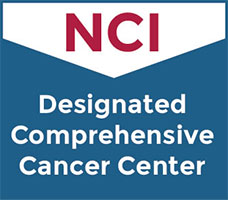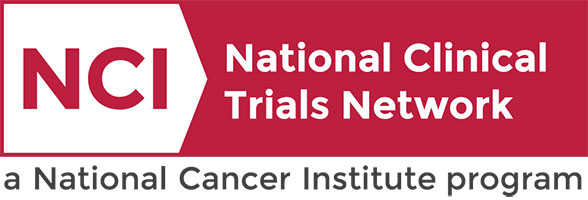Clinical Trials Search at Vanderbilt-Ingram Cancer Center
A Study of a New Way to Treat Children and Young Adults With a Brain Tumor Called NGGCT
Multiple Cancer Types
This phase II trial studies the best approach to combine chemotherapy and radiation therapy (RT) based on the patient's response to induction chemotherapy in patients with non-germinomatous germ cell tumors (NGGCT) that have not spread to other parts of the brain or body (localized). This study has 2 goals: 1) optimizing radiation for patients who respond well to induction chemotherapy to diminish spinal cord relapses, 2) utilizing higher dose chemotherapy followed by conventional RT in patients who did not respond to induction chemotherapy. Chemotherapy drugs, such as carboplatin, etoposide, ifosfamide, and thiotepa, work in different ways to stop the growth of tumor cells, either by killing the cells, by stopping them from dividing, or by stopping them from spreading. Radiation therapy uses high energy x-rays or high-energy protons to kill tumor cells and shrink tumors. Studies have shown that patients with newly-diagnosed localized NGGCT, whose disease responds well to chemotherapy before receiving radiation therapy, are more likely to be free of the disease for a longer time than are patients for whom the chemotherapy does not efficiently eliminate or reduce the size of the tumor. The purpose of this study is to see how well the tumors respond to induction chemotherapy to decide what treatment to give next. Some patients will be given RT to the spine and a portion of the brain. Others will be given high dose chemotherapy and a stem cell transplant before RT to the whole brain and spine. Giving treatment based on the response to induction chemotherapy may lower the side effects of radiation in some patients and adjust the therapy to a more efficient one for other patients with localized NGGCT.
Germ Cell (Pediatrics),
Pediatrics
II
Esbenshade, Adam
NCT04684368
COGACNS2021
Testing Longer Duration Radiation Therapy Versus the Usual Radiation Therapy in Patients With Cancer That Has Spread to the Brain
This phase III trial compares the effectiveness of fractionated stereotactic radiosurgery (FSRS) to usual care stereotactic radiosurgery (SRS) in treating patients with cancer that has spread from where it first started to the brain. Radiation therapy uses high energy x-rays to kill tumor cells and shrink tumors. FSRS delivers a high dose of radiation to the tumor over 3 treatments. SRS is a type of external radiation therapy that uses special equipment to position the patient and precisely give a single large dose of radiation to a tumor. FSRS may be more effective compared to SRS in treating patients with cancer that has spread to the brain.
Not Available
III
Cmelak, Anthony
NCT06500455
NRGNEUBN013
Image-Based, In-Vivo Assessment of Tumor Hypoxia to Guide Hypoxia-Driven Adaptive Radiation Therapy
Miscellaneous
Miscellaneous
This study will apply novel MRI approaches with established sensitivity to tissue oxygen consumption and perfusion to predict hypoxia-associated radiation resistance, manifested as tumor recurrence and progression post-treatment.
Miscellaneous
Early I
Osmundson, Evan
NCT05996432
VICC-EDMDT23195
Study of Tinengotinib VS. Physician's Choice a Treatment of Subjects With FGFR-altered in Cholangiocarcinoma
Liver
Liver
This study is a Phase III, Randomized, Controlled, Global Multicenter Study to Evaluate the Efficacy and Safety of Oral Tinengotinib versus Physician's Choice in Subjects with Fibroblast Growth Factor Receptor (FGFR)-altered, Chemotherapy- and FGFR Inhibitor-Refractory/Relapsed Cholangiocarcinoma
Liver
III
Heumann, Thatcher
NCT05948475
VICC-DTGIT23271
Evaluating the Addition of the Immunotherapy Drug Atezolizumab to Standard Chemotherapy Treatment for Advanced or Metastatic Neuroendocrine Carcinomas That Originate Outside the Lung
Neuroendocrine
Neuroendocrine
This phase II/III trial compares the effect of immunotherapy with atezolizumab in combination with standard chemotherapy with a platinum drug (cisplatin or carboplatin) and etoposide versus standard therapy alone for the treatment of poorly differentiated extrapulmonary (originated outside the lung) neuroendocrine cancer that may have spread from where it first started to nearby tissue, lymph nodes, or distant parts of the body (advanced) or that has spread from where it first started (primary site) to other places in the body (metastatic). The other aim of this trial is to compare using atezolizumab just at the beginning of treatment versus continuing it beyond the initial treatment. Immunotherapy with monoclonal antibodies, such as atezolizumab, may help the body's immune system attack the cancer, and may interfere with the ability of tumor cells to grow and spread. Cisplatin and carboplatin are in a class of medications known as platinum-containing compounds that work by killing, stopping or slowing the growth of cancer cells. Etoposide is in a class of medications known as podophyllotoxin derivatives. It blocks a certain enzyme needed for cell division and DNA repair, and it may kill cancer cells. Giving atezolizumab in combination with a platinum drug (cisplatin or carboplatin) and etoposide may work better in treating patients with poorly differentiated extrapulmonary neuroendocrine cancer compared to standard therapy with a platinum drug (cisplatin or carboplatin) and etoposide alone.
Neuroendocrine
II/III
Ramirez, Robert
NCT05058651
SWOGGIS2012
Split Course Adaptive Radiation Therapy With Pembrolizumab With/Without Chemotherapy for Treating Stage IV Lung Cancer
Multiple Cancer Types
This phase I/II trial tests the safety and efficacy of split-course adaptive radiation therapy in combination with immunotherapy with or without chemotherapy for the treatment of patients with stage IV lung cancer or lung cancer that that has spread to nearby tissue or lymph nodes (locally advanced). Radiation therapy is a standard cancer treatment that uses high energy rays to kill cancer cells and shrink tumors. Split-course adaptive radiation therapy uses patient disease response to alter the intensity of the radiation therapy. Immunotherapy with monoclonal antibodies such as pembrolizumab, ipilimumab, cemiplimab, atezolizumab or nivolumab may help the body's immune system attack the cancer, and may interfere with the ability of tumor cells to grow and spread. Chemotherapy drugs like carboplatin, pemetrexed, and paclitaxel work in different ways to stop the growth of cancer cells, either by killing the cells, by stopping them from dividing, or by stopping them from spreading. Giving split-course adaptive radiation therapy with standard treatments like immunotherapy and chemotherapy may be more effective at treating stage IV or locally advanced lung cancer than giving them alone.
Lung,
Non Small Cell,
Phase I
I/II
Osmundson, Evan
NCT05501665
VICCTHOP2185
A Study of Tucatinib With Trastuzumab and mFOLFOX6 Versus Standard of Care Treatment in First-line HER2+ Metastatic Colorectal Cancer
This study is being done to find out if tucatinib with other cancer drugs works better than standard of care to treat participants with HER2 positive colorectal cancer. This study will also determine what side effects happen when participants take this combination of drugs. A side effect is anything a drug does to the body besides treating your disease.
Participants in this study have colorectal cancer that has spread through the body (metastatic) and/or cannot be removed with surgery (unresectable).
Participants will be assigned randomly to the tucatinib group or standard of care group. The tucatinib group will get tucatinib, trastuzumab, and mFOLFOX6. The standard of care group will get either:
* mFOLFOX6 alone,
* mFOLFOX6 with bevacizumab, or
* mFOLFOX6 with cetuximab mFOLFOX6 is a combination of multiple drugs. All of the drugs given in this study are used to treat this type of cancer.
Participants in this study have colorectal cancer that has spread through the body (metastatic) and/or cannot be removed with surgery (unresectable).
Participants will be assigned randomly to the tucatinib group or standard of care group. The tucatinib group will get tucatinib, trastuzumab, and mFOLFOX6. The standard of care group will get either:
* mFOLFOX6 alone,
* mFOLFOX6 with bevacizumab, or
* mFOLFOX6 with cetuximab mFOLFOX6 is a combination of multiple drugs. All of the drugs given in this study are used to treat this type of cancer.
Not Available
III
Not Available
NCT05253651
VICC-DTGIT23052
Clinical Trial of an Anti-cancer Drug, CA-4948 (Emavusertib), in Combination With Chemotherapy Treatment (FOLFOX Plus Bevacizumab) in Metastatic Colorectal Cancer
Multiple Cancer Types
This phase I trial studies the side effects and best dose of CA-4948 when given together with fluorouracil, leucovorin, oxaliplatin (FOLFOX) plus bevacizumab in treating patients with colorectal cancer that has spread from where it first started (primary site) to other places in the body (metastatic). CA-4948 may stop the growth of tumor cells by blocking some of the enzymes needed for cell growth. The chemotherapy drugs used in FOLOX, fluorouracil and oxaliplatin, work in different ways to stop the growth of tumor cells, either by killing the cells, by stopping them from dividing, or by stopping them from spreading. Leucovorin is used with fluorouracil to treat colorectal cancer. Bevacizumab is in a class of medications called anti-angiogenic agents. It works by stopping the formation of blood vessels that bring oxygen and nutrients to the tumor. This may slow the growth and spread of the tumor. Giving CA-4948 with FOLFOX plus bevacizumab may be safe, tolerable and/or effective in treating patients with metastatic colorectal cancer.
Colon,
Phase I,
Rectal
I
Ciombor, Kristen
NCT06696768
ETCGIP10655
Standard Systemic Therapy With or Without Definitive Treatment in Treating Participants With Metastatic Prostate Cancer
Prostate
Prostate
This phase III trial studies how well standard systemic therapy with or without definitive treatment (prostate removal surgery or radiation therapy) works in treating participants with prostate cancer that has spread to other places in the body. Addition of prostate removal surgery or radiation therapy to standard systemic therapy for prostate cancer may lower the chance of the cancer growing or spreading.
Prostate
III
Schaffer, Kerry
NCT03678025
SWOGUROS1802
Testing the Effectiveness of Two Immunotherapy Drugs (Nivolumab and Ipilimumab) With One Anti-cancer Targeted Drug (Cabozantinib) for Rare Genitourinary Tumors
Multiple Cancer Types
This phase II trial studies how well cabozantinib works in combination with nivolumab and ipilimumab in treating patients with rare genitourinary (GU) tumors that has spread from where it first started (primary site) to other places in the body. Cabozantinib may stop the growth of tumor cells by blocking some of the enzymes needed for cell growth. Immunotherapy with monoclonal antibodies, such as nivolumab and ipilimumab, may help the body's immune system attack the cancer, and may interfere with the ability of tumor cells to grow and spread. Giving cabozantinib, nivolumab, and ipilimumab may work better in treating patients with genitourinary tumors that have no treatment options compared to giving cabozantinib, nivolumab, or ipilimumab alone.
Bladder,
Kidney (Renal Cell),
Rectal
II
Tan, Alan
NCT03866382
ALLIANCEUROA031702


